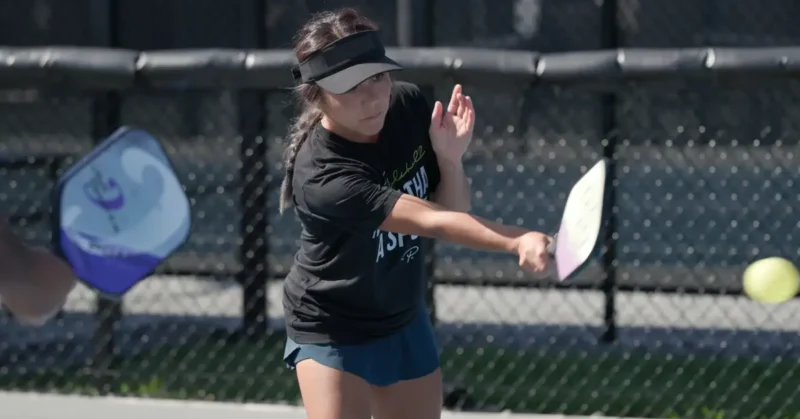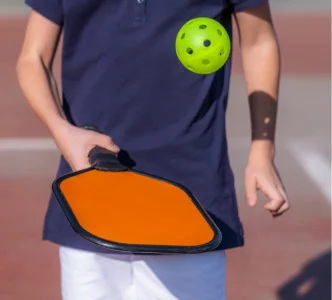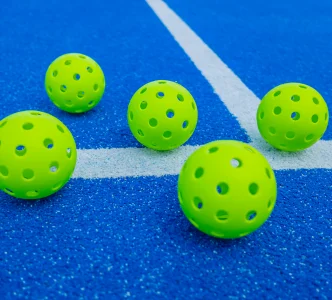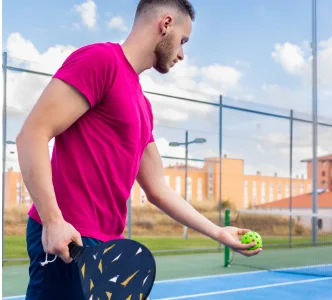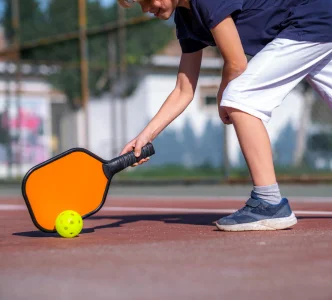Stepping onto the pickleball court for the first time can be an exhilarating yet daunting experience. Are you new to the sport and eager to improve your game? If so, you’re in the right place.
The journey from a novice to a proficient player is filled with learning curves, but with the right guidance, it’s a path paved with rewarding milestones.
In my starting days of pickleball, I was always eager to learn new pickleball tips and strategies to improve my skills. That’s why I’m excited to share a comprehensive guide filled with effective pickleball coaching tips, pickleball training drills, and essential playing tips tailored for beginners.
Whether it’s mastering the basics or improving pickleball skills, this guide is designed to accelerate your skills development in a structured way.
How to Improve Basic Pickleball Skill

Improving your basic pickleball skills begins with a focus on the fundamentals, which are crucial for laying a solid foundation in any sport. Start with your stance and grip, the two pillars of pickleball mastery. Ensure your stance is balanced and ready, with feet shoulder-width apart, knees slightly bent, and weight evenly distributed.
This position enables quick movements and effective shots. Your grip on the paddle should be neither too tight nor too loose, allowing for flexibility and control. Practice these basics regularly, as they influence your ability to hit the ball accurately and with the desired power.
Next, hone in on your serve and return skills. Serving effectively in pickleball sets the tone for the point, so aim for consistency and placement over power. Practice both underhand and overhand serves to find what works best for you and to keep your opponents guessing. For returns, focus on positioning and anticipation.
Work on reading the server’s body language and paddle position to better anticipate the serve’s direction and speed. This will improve your reaction time and enable you to return serves more confidently and accurately.
Lastly, mastering the dink shot is essential for improving your basic pickleball skills. The dink is a soft, controlled shot played at the net, aiming to drop the ball just over into the opponent’s non-volley zone, making it difficult for them to hit a powerful return. This shot requires finesse and precision, making it a vital skill to practice.
Incorporate drills that focus on improving your touch and control, allowing you to place the ball precisely where you want it. By improving your dink shots, you’ll add a strategic layer to your game, forcing opponents into challenging positions and increasing your chances of winning points.
Pickleball Practice Drills for Beginners
1. Serve and Return Drill
- Objective: Improve accuracy and consistency in serves and returns.
- How to Do It: Partner with another player and take turns serving to each other. Aim to serve to different areas of the service box to practice control and precision. When returning, focus on placing your shots strategically, aiming for areas that are difficult for your opponent to reach. Keep track of successful serves and returns to measure improvement.
2. Dink Practice
- Objective: Enhance your soft game by mastering the dink shot.
- How to Do It: With a partner, stand at opposite ends of the net in the non-volley zone (kitchen). Exchange dink shots, aiming to keep the ball in play as long as possible. Concentrate on placing your shots just over the net and within the kitchen to make it challenging for your opponent. This drill helps develop touch, control, and strategic shot placement.
3. Wall Ball Drill
- Objective: Improve paddle control and hand-eye coordination.
- How to Do It: Stand about 10-15 feet from a wall with your pickleball paddle and a few balls. Hit the ball against the wall, aiming to keep it at a consistent height and pace. Practice different shots, including forehands, backhands, and volleys, to work on your overall paddle skills. This solo drill is excellent for beginners to practice strokes and build confidence.
4. Ladder Drill for Footwork
- Objective: Increase agility and footwork on the court.
- How to Do It: Use a ladder or mark out a series of squares on the ground to mimic a ladder. Practice moving through the ladder with various footwork patterns (e.g., side shuffles, quick steps in and out of each box). This drill can be done as a warm-up or as part of your practice session, enhancing your ability to move quickly and efficiently around the court.
5. Three-Ball Drill for Stamina and Strategy
- Objective: Build stamina and develop strategic play under fatigue.
- How to Do It: With a partner, start a game where the server has three balls. The server must win a point with each ball to win the game, while the receiver aims to win any point to take the game. This drill puts pressure on both players to strategize and play smartly, even when tired, mimicking the conditions of a long rally in match play.
Beginner Pickleball Coaching Tips for Skill Development
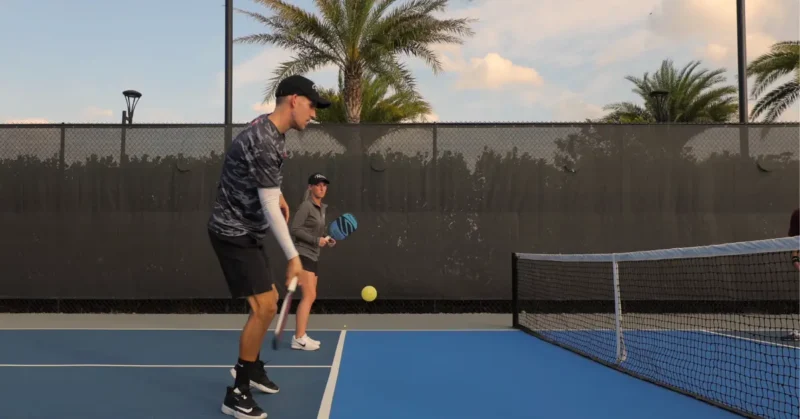
As a beginner in pickleball, getting the right coaching tips can significantly affect how quickly and effectively you develop your skills. Here are some valuable tips to keep in mind:
- A balanced, ready stance is crucial. Keep your knees slightly bent, stay on the balls of your feet, and be prepared to move in any direction.
- Focus on a consistent, reliable serve. It’s not just about power; placement and accuracy are essential. Practice serving different areas of the court.
- Learn to volley with control. This means hitting the ball before it bounces, ideally at the net, to keep your opponent on their toes.
- The dink is a soft shot played at the net, aimed at landing in the opponent’s non-volley zone. It’s a strategic play that requires precision.
- Good footwork is essential for reaching shots and positioning yourself effectively—drill lateral moves, quick forward and backward steps, and transition from side to side.
- Know where to be at different times during the game. Positioning can be as important as the shots you play.
- Familiarize yourself with the official rules and scoring system of pickleball. This foundational knowledge is essential for gameplay and strategy.
You can also ask Coaches. They can provide coaching tips to integrate into your practice and insights on common beginner mistakes, helping you avoid them. They can also offer tailored advice to improve your technique.
Whether you’re accessing this guidance through local clubs, online resources, or group clinics, these tips can refine your approach to the game. Embrace this expert advice; it’s invaluable for developing your skills effectively.
Progressing to an intermediate level in pickleball means building on your basic skills and adding more complexity and strategy to your game.
How to Improve Your Pickleball Skills?
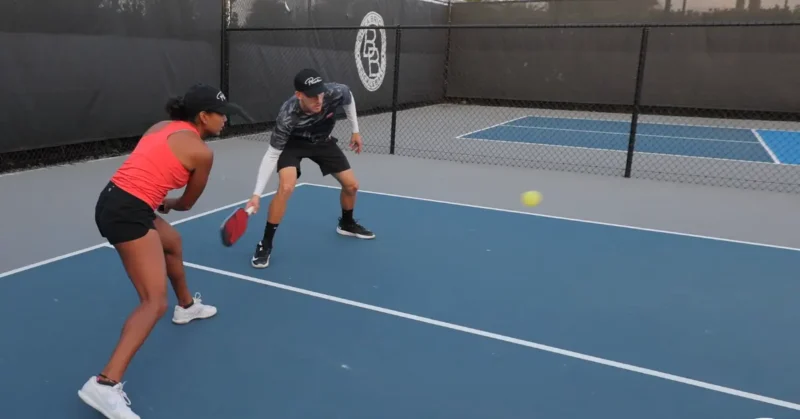
Improving your pickleball skills requires a combination of practice, strategy, and mental preparation. First and foremost, dedicating time to practice is essential. Engage in regular drills that focus on specific aspects of the game, such as serving, volleying, and dinking.
These targeted exercises help refine your techniques, ensuring that each shot is executed with precision and confidence. Additionally, playing against opponents with varying skill levels exposes you to different styles of play, allowing you to adapt and strengthen your own game strategy.
Strategically, understanding the nuances of pickleball is key. This means not only mastering the physical execution of shots but also developing an awareness of the court and your opponent’s tendencies.
Learn to anticipate shots and position yourself effectively, which will enable you to control the pace and direction of the game. Incorporating strategic play, such as knowing when to engage in a soft game versus power shots, can significantly improve your performance on the court.
In mental game strategies like mental resilience play a pivotal role in enhancing your pickleball skills. Maintaining focus during matches and practicing positive self-talk can boost your confidence and ability to handle pressure situations.
Set realistic goals and celebrate your progress, however small, to keep motivation high. Remember, improvement is a continuous journey. By embracing a holistic approach that includes physical practice, strategic thinking, and mental toughness, you’ll see significant advancements in your pickleball skills.
Learning From Online Resources for Skill Improvement
Accessible resources are invaluable for skill development. Online tutorials and videos are great for visual learning and understanding advanced techniques.
Participating in pickleball forums and social media groups can provide insights and tips from various players. These platforms often share drills, strategies, and personal experiences that benefit intermediate players.
Guidance on Accessible Resources for Skill Improvement
While enhancing your skills, consider participating in local pickleball clinics and workshops or joining clubs. These options provide affordable coaching and opportunities to play with various partners.
Additionally, explore cost-effective training methods, such as group lessons or private coaching sessions, which offer quality instruction without straining your budget.
Advanced Pickleball Tips and Techniques for Skill Development
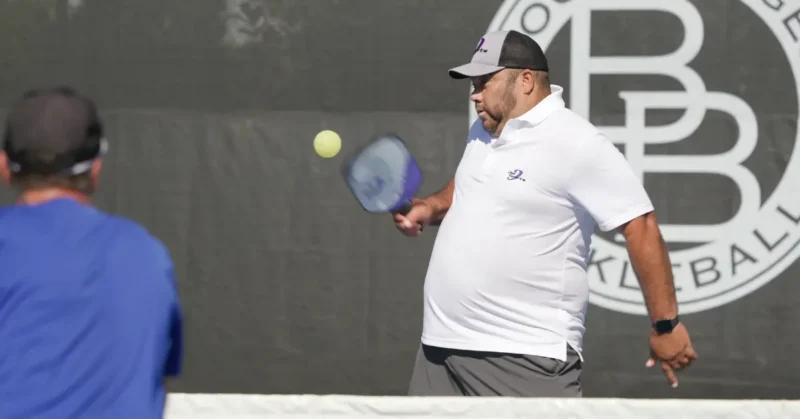
Learning from the Pros
Watching professional pickleball tournaments allows you to learn new strategies, and it’s the best way to learn advanced pickleball tactics.
Please pay close attention to small things like how the pros move around the court, disguise their serves, and place their returns. Studying their go-to techniques helps you understand optimal shot selection for different scenarios.
Practice Specialty Shots
Once you know some pro techniques, the next step is practicing them yourself. Work on shots like quick volleys at the net, high lobs over opponents’ heads, and angled passing shots.
Use pickleball machines or hitting partners to drill these over and over. Getting comfortable with speciality shots gives you an advantage.
Isolate Your Weak Areas
We all have room for improvement, even at advanced skill levels. Honestly assess what needs work in your game. Maybe your backhand needs more power, or you need more high returns. Isolate weak spots and create drills to turn them into strengths through repetition. Filling gaps makes you a well-rounded player.
The Key Skills Needed to Be Developed in Playing Pickleball
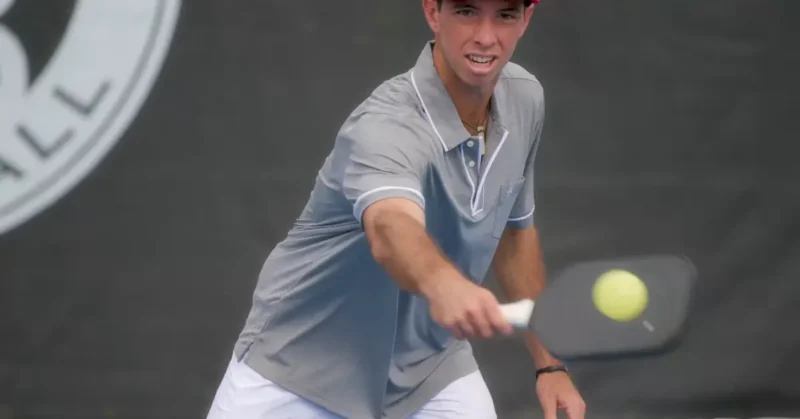
Some core competencies form the building blocks for well-rounded pickleball mastery. First, develop solid fundamentals like serving, volleying, overheads, and dinks. But also work on footwork to cover the court efficiently, mental composure during rallies, and physical endurance.
Boosting Agility and Precision
Drills and exercises that increase speed, reaction time, and coordination give you key athletic advantages. Lateral shuffle steps, crossover footwork patterns, and rapid volley exchanges build agility and precision. Enhanced agility lets you smoothly transition between shots, while reflexes help reliably handle pace/spin.
Importance of Physical Fitness
Pay attention to comprehensive fitness development – increased strength, speed, and flexibility make sustaining top performance easier. Physical fitness and agility training prepare the body for pickleball’s dynamic rigors and safeguard joint health. A commitment to balanced conditioning protects against injuries.
Team Play and Communication in Doubles
Now, let’s dive into being an excellent team player in pickleball doubles. It’s like having a dynamic partner on the court; let me tell you, it’s a blast!
Pickleball Doubles Teamwork Strategies
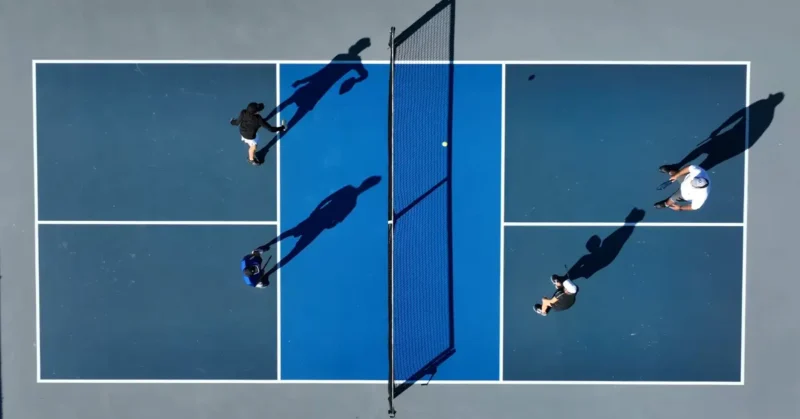
When you’re in doubles action, teamwork becomes your superpower. I shared innovative strategies to help you and your partner cover the court, make clever moves, and outshine your opponents.
Here are my strategies in doubles:
- Imagine you and your partner are connected by an invisible string. Stay close and move together as a unit. This way, you can cover more ground and react faster.
- Stay out of one position. Switch sides with your partner when it makes sense. It keeps your opponents guessing and helps you find your sweet spot on the court.
- Communication is key. Shout out “mine” or “yours” to avoid collisions and confusion. Clear, quick calls keep the game flowing smoothly.
- Get into your partner’s head. Predict their moves and be ready to cover any gaps. It’s like having a telepathic connection on the court.
- Celebrate your victories as a team. High-fives, fist bumps, or a simple “nice shot” can boost morale and keep the energy up.
Tips for Effective Communication in Doubles Play
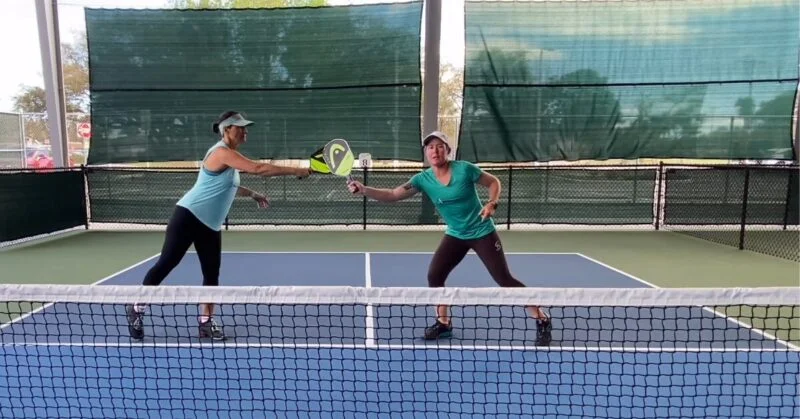
Good communication is the secret sauce in doubles. Picture playing with a buddy, where you know each other’s thoughts without saying a word. It’s like having your secret language on the court.
I’ve got tips to ensure you and your partner are always in sync, making lightning-fast decisions and dominating the game together.
- Stand with your partner on one side of the court. Practice calling out “mine” or “yours” as you approach the ball. The key here is not just calling the shots but also moving accordingly. It helps sync your communication with your on-court movements.
- Maintain eye contact with your partner during the game. It’s incredible how much you can convey without words. Use this silent communication to coordinate your movements and strategies.
- Develop a set of hand signals with your partner. For example, tapping your chest can mean “mine,” and wiping your forehead can mean “yours.” These signals can be handy when the crowd gets noisy.
- Before the game, chat with your partner about your game plan. Discuss who will cover which areas and what your signals will be. It sets the tone for effective communication during the match.
- Encourage each other during the game. A simple “great shot” or “nice try” can boost morale and keep the motivation high.
Specific Drills for Targeted Skill Improvement
Now, Let’s dive into specific drills designed to improve your pickleball skills. Here are my proven drills that I want to share with you for your pickleball skill development.
Drills for Enhancing Serve Accuracy and Power
- Place targets on the opposite side of the net and aim your serves at these spots. This drill improves your ability to serve accurately.
- Work on your serve’s power by practicing your toss and timing. A powerful serve can put pressure on your opponents.
Dinking Drills for Net Play Proficiency
- Stand close to the Non-volley line and engage in rapid dinking exchanges with your partner. Focus on quick reactions and precise placement.
- Practice dropping your dinks over the net and into the kitchen (non-volley zone). This keeps your opponents on their toes.
Footwork and Positioning Drills for Better Court Coverage
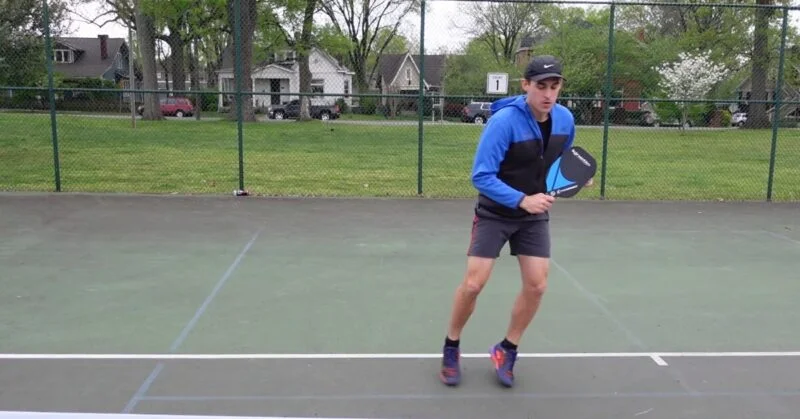
- Set up markers and practice moving laterally along the baseline. This improves your court coverage.
- Work on transitioning from the baseline to the net quickly. Proper footwork ensures you’re always in the correct position.
Strategic Drills for Shot Selection and Placement
- Play a game where you must choose the right shot for the situation. This hones your decision-making skills.
- Create scenarios where you must place your shots precisely, such as hitting the opponent’s weaker side.
The Mental Game of Pickleball

In pickleball, the mental aspect of the game is just as crucial as the physical skills. Let’s explore the mental aspects that can make a difference in your performance.
Mental Toughness in Pickleball Skill Development
- Developing mental toughness means being resilient in the face of challenges. Pickleball can be competitive, and mental toughness helps you stay focused and determined.
- Train your mind to stay positive during matches. Self-belief can be a game-changer.
Techniques for Developing a Competitive Mindset In Pickleball
- Set specific goals for your pickleball journey. These goals give you a clear sense of purpose and motivation.
- Visualize your success on the court. Visualization can enhance your confidence and help you mentally prepare for games.
Stress Management and Focus Techniques
- Incorporate deep breathing exercises to manage stress during matches. Controlled breathing can calm your nerves and keep you focused.
- Practice mindfulness techniques to stay in the present moment. This reduces anxiety and improves concentration.
The Role of Game Etiquette and Sportsmanship
- Maintain respect for your opponents, regardless of the game’s intensity. Good sportsmanship fosters a positive playing environment.
- Adhering to pickleball rules is not just about fairness; it’s a display of sportsmanship. Respect the game and your fellow players.
Conclusion
This exploration of pickleball coaching tips for skill development has illuminated the path to becoming a proficient player in this exciting sport.
I’ve emphasized the importance of skill refinement in pickleball and provided valuable insights for players of all levels, from beginners mastering fundamental techniques to advanced players honing their strategies.
The key takeaway is the enjoyment of continuous learning and practice, making pickleball a game and a journey of growth.
Did I Miss Anything?
Now I Would like to hear from you:
Which Strategy or tip from this post are you going to try first?
Or maybe I didn’t mention one of your favorite techniques or Strategy?
Let me know by leaving a comment below right now.
FAQs
How often should I practice pickleball to see improvement?
To see noticeable improvement, it’s recommended to practice at least 2-3 times a week. Consistency is key, so try to maintain a regular schedule. Incorporating various drills and playing matches against different opponents will also accelerate your skill development.
What are the most important skills to focus on as a beginner?
As a beginner, focus on mastering the fundamentals such as the correct grip, stance, and basic shot techniques (serve, volley, and dink). Once comfortable with these, gradually introduce more advanced strategies and shots into your practice.
How can I improve my serve in pickleball?
Improving your serve involves practice and technique refinement. Focus on your stance, grip, and swing motion. Experiment with different serving styles (e.g., soft serve, power serve, slice serve) to find what works best for you. Regularly practicing serves targeting specific areas of the service box can also enhance accuracy and effectiveness.
What’s the best way to practice if I don’t have a partner?
If you don’t have a partner, wall drills are an excellent way to practice. You can work on your serve, volley, and groundstrokes by hitting the ball against a wall. Additionally, many drills designed to improve footwork, agility, and endurance can be done solo.
How important is footwork in pickleball?
Footwork is crucial in pickleball, as it affects your ability to reach and return shots effectively. Good footwork allows for better positioning, balance, and shot execution. Practicing ladder drills, side shuffles, and quick forward and backward movements can significantly improve your footwork.

